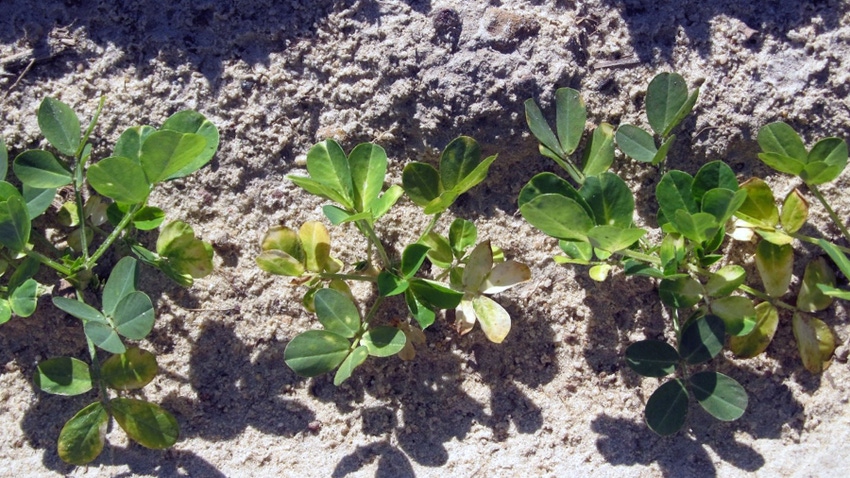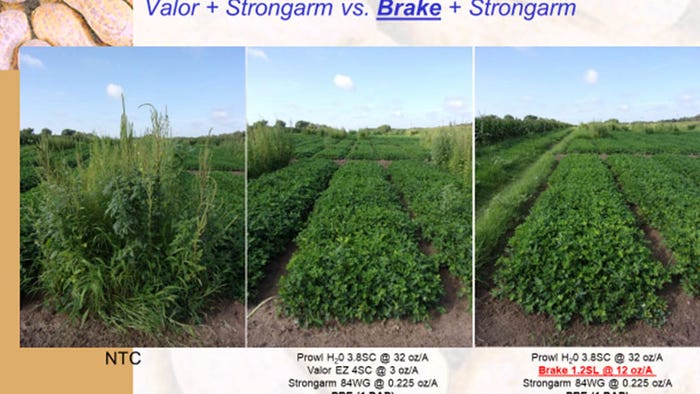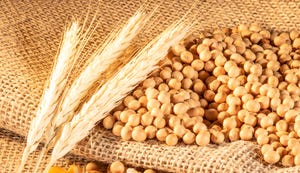April 3, 2023

In the world of herbicide development, much of the emphasis by major U.S. agricultural chemical companies is on the “big acre” crops such as field corn, soybean and wheat. I can’t blame them though, since there were only about 88.58 million acres of corn, 87.45 million acres of soybean and 45.74 million acres of wheat planted in 2022! Although extremely important to me and southern agriculture, 1.45 million acres of peanut planted pales in comparison to those biggies.
Although the peanut might be a small (but mighty) fish in a big pond, peanut growers have been fortunate to have 9 new herbicides added to their weed control toolbox since 1999. These include Outlook (1999), Strongarm (2000), Valor (2001), Spartan (2003), Cobra (2005), Fusilade (2009), Warrant (2014), Zidua (2017) and Anthem Flex (2020). I very much appreciate the Ag Industry’s efforts here!
In the latter part of January 2023, peanut growers received another new herbicide for their toolbox. After more than a decade of research, Brake (fluridone) was fully registered for use in peanut by the U.S.-EPA. Fluridone, sold under the trade name of Sonar, has been used for aquatic weed control since 1986. Brake was registered for use in cotton in 2016.

Comparison of current standard peanut weed control program with a Brake weed control program in peanuts, TyTy, Georgia 2022.
Peanut growers might consider adding Brake to their current weed control programs for two reasons. The first reason is that Brake provides very effective residual control of Palmer amaranth, peanut public enemy No. 1. The second reason is that Brake has a mode of action (WSSA/HRAC Group 12 – phytoene desaturase inhibitor) that has not been used much in peanuts for several years (more on this in the next paragraph). Thus, a great time to have another mode of action around since PRE/POST resistance to the WSSA/HRAC Group 14 herbicides (i.e. PPO’s) in Palmer amaranth was confirmed in Georgia. As a reminder, popular PPO-herbicides include such favorites as Aim, Cobra, ET, Goal, Reflex, Valor and Ultra Blazer.
Slightly seasoned peanutters might remember an older herbicide sold under the trade name of Zorial (norflurazon). Zorial was registered for peanut in 1993 but for whatever reason, never became a mainstreamer (for the record, my official peanut weed science career began in 1997). Zorial had the same mode of action as Brake (WSSA/HRAC Group 12). Zorial is now sold commercially as Solicam. Peanut is still on that label.
As I alluded to earlier, I have been testing Brake since 2013. Since that time numerous peanut cultivar tolerance and weed control studies have been conducted. In my program, Brake has been tested on 8 peanut cultivars including GA-06G, GA-12Y, GA-16-HO, GA-18RU, GA-20VHO, AU-NPL 17, TifNV-High O/L and FloRun 331. Of these, GA-16HO is slightly more sensitive to Brake but not enough to not use it when that cultivar is planted. Generally, Brake has performed well in terms of weed efficacy but MUST be used in a complete program (i.e. never alone) (Figure 1).
Other important things to remember are that Brake will need at least 0.5” of irrigation or rainfall after application to perform up to its potential. Also, Brake will cause some peanut injury in the form of stunting and bleaching, especially when higher rates are used, and wetter conditions prevail (Figure 2). Lastly, the normal use rate of Brake 1.2LC will be 12 oz/A (0.113 lb ai/A) and cost somewhere around $16/A. The most recent Brake label, which includes peanut, can be found here: https://ag.sepro.com/wp-content/uploads/2023/02/67690-78-101232-Brake-Specimen-Label-FPL20230125-Final.pdf.
I always think it is a great idea to try a new herbicide on a limited basis to see how it will fit. After 31 years in Extension, I’m pretty sure that every farmer does something different. I am thankful to have another herbicide for weed control in peanuts and I can promise you that I will be pushing the chemical industry for others. I wish you the best of luck in 2023!
As always, good weed hunting!
Read more about:
Herbicide ResistanceAbout the Author(s)
You May Also Like






